
Roots
To truly comprehend the profound ways ancestral hair rituals continue to shape community bonds and self-perception, one must first listen to the echoes of beginnings. This journey commences not with a fashion trend, but with the very biology of a strand, tracing its lineage back through millennia. For people of Black and mixed-race heritage, hair is far from a mere appendage; it serves as a living chronicle, a physical manifestation of ancient wisdom, communal ties, and an enduring spirit.
Its intricate forms and textures carry the whispers of foremothers and forefathers, weaving a narrative of identity that spans continents and generations. This shared heritage offers a lens through which to behold not only how we perceive ourselves, but how we connect with others, a testament to the persistent vitality of ancestral practices.

The Hair Strand’s Ancient Blueprint
The unique morphology of textured hair, often characterized by its tight coils and curls, represents an evolutionary marvel. Scientific understanding suggests that this hair form, prevalent among African populations, adapted to the intense solar radiation of ancestral lands. The spiraled structure and wider follicular patterns allowed for improved airflow around the scalp, facilitating cooling and offering natural protection against ultraviolet light.
(Jablonski & Chaplin, 2014) This intrinsic design speaks to hair’s earliest function, a shield from the elements, deeply rooted in the continent’s embrace. Understanding this elemental biology provides a foundation for appreciating the layers of cultural meaning that later adorned these natural structures.
Hair’s intrinsic design, shaped by millennia of evolution, speaks to a heritage of natural protection and adaptation.
The study of hair anatomy reveals a complexity that parallels the richness of its cultural significance. Each strand comprises a cortex, medulla, and cuticle, with the distribution and arrangement of keratin proteins dictating curl pattern. Textured hair’s elliptical follicle shape, contrasting with the rounder follicles of straight hair, contributes directly to its helical growth.
This biological distinction is not an anomaly; rather, it is a hallmark of human diversity, a marker of journeys through ancient landscapes. Early attempts at hair classification, though sometimes fraught with bias, sought to categorize these variations, unwittingly laying groundwork for an understanding of human adaptation and shared heritage.

Categorizing Hair’s Ancestral Language
Across historical contexts, various systems emerged to categorize hair types, though many of these systems, particularly those born of colonial gazes, held inherent biases. Nevertheless, within African societies themselves, a nuanced lexicon existed, identifying textures and styles not just by their physical appearance, but by their social and ritualistic meanings. These distinctions offered insights into an individual’s lineage, marital status, or even their place within a spiritual hierarchy. The language used to describe textured hair today, while sometimes drawing from scientific frameworks, increasingly seeks to reclaim and honor these historical and cultural terms, moving beyond reductionist views to embrace the full spectrum of coil patterns and their significance.
- Coil ❉ A descriptor for tightly wound hair strands that form small, often spring-like curls.
- Kink ❉ Referring to the sharp, angular bends within a hair strand, contributing to its zigzag pattern.
- Twist ❉ A method of wrapping two hair strands around each other to create a rope-like appearance, a technique with ancient origins.
- Loc ❉ Hair intentionally matted and sculpted into rope-like strands, carrying significant spiritual and communal meaning for various peoples.
- Braid ❉ An ancient art of intertwining three or more hair sections, a foundation for countless historical and contemporary styles.
| Characteristic Hair Follicle Shape |
| Ancestral Context Signified regional or tribal identity, linked to inherited appearance. |
| Modern Scientific Understanding Elliptical for textured hair, dictating curl tightness and strand strength. |
| Characteristic Curl Pattern |
| Ancestral Context Communicated social standing or life stages in various communities. (Byrd & Tharps, 2001) |
| Modern Scientific Understanding Determined by cortical cell distribution and disulfide bonds within the keratin. |
| Characteristic Hair Density |
| Ancestral Context Associated with vitality and health, often a sign of beauty in ancient societies. |
| Modern Scientific Understanding Reflects the number of individual hair strands per square inch on the scalp. |
| Characteristic The very structure of textured hair speaks to its deep heritage, a scientific blueprint for its unique cultural narrative. |
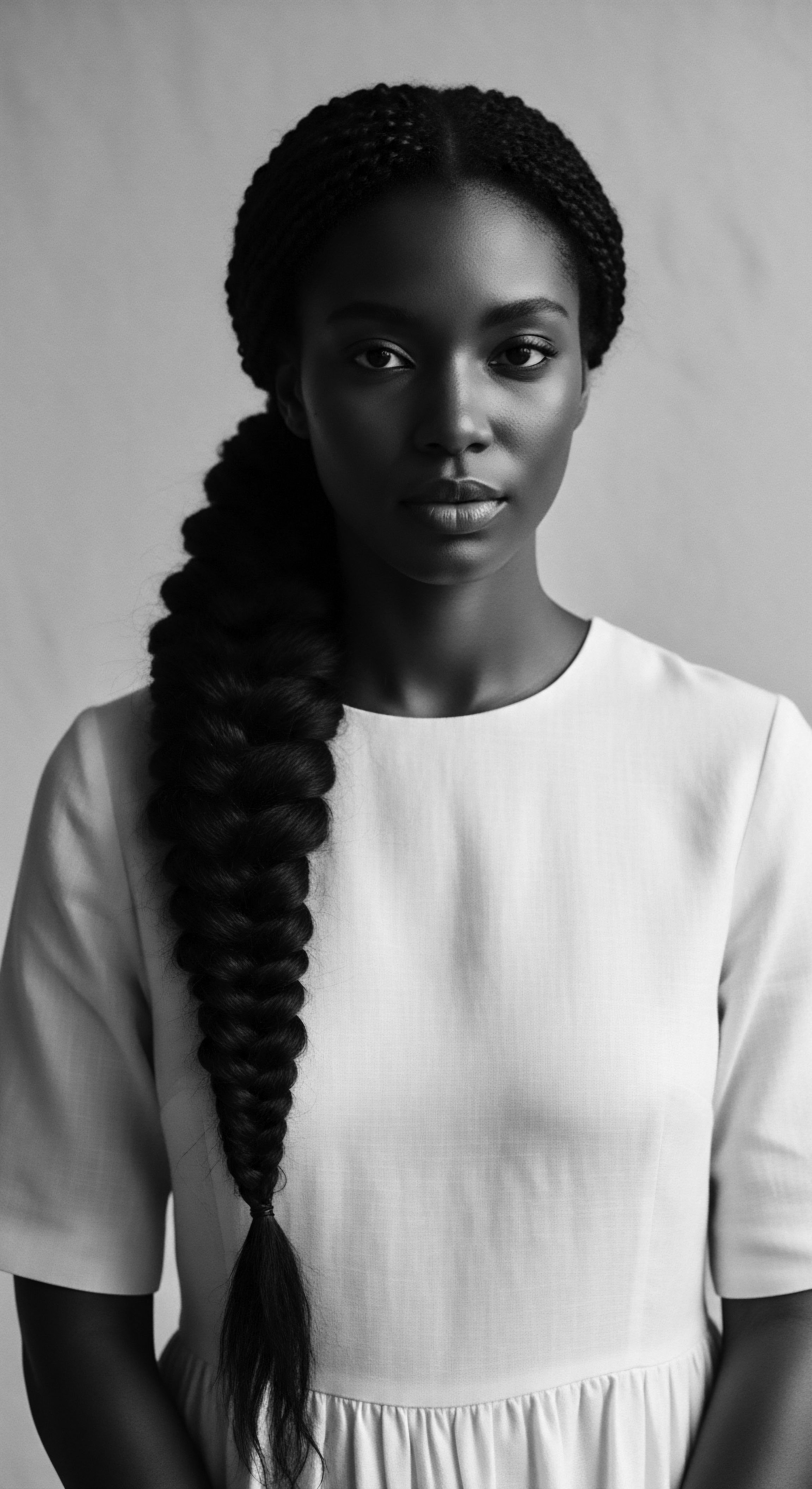
How Do Hair’s Growth Cycles Inform Ancestral Care?
Hair’s growth cycle, encompassing anagen (growth), catagen (transition), and telogen (rest), dictates how long a strand remains on the scalp. For textured hair, this cycle, combined with its inherent dryness due to coil patterns hindering sebum distribution, historically guided care practices. Ancestral communities understood the need for moisture retention and scalp health, developing remedies and routines that maximized hair’s potential.
These practices, though pre-dating modern chemistry, demonstrate an intuitive grasp of hair biology, passed down through oral tradition and lived experience. The deliberate, often communal, acts of cleansing, oiling, and styling were not random gestures; they were informed by centuries of observation and a profound connection to the body’s natural rhythms.
The natural hair movement of today, which champions the acceptance of textured hair in its unaltered state, draws directly from this ancestral wisdom. The principles of minimizing manipulation, sealing moisture, and using nutrient-rich botanicals echo practices utilized for millennia. This modern resurgence highlights the enduring relevance of heritage in informing contemporary approaches to hair health, moving beyond Eurocentric beauty ideals to celebrate the intrinsic beauty of Black and mixed-race hair textures. (Thompson, 2009)

Ritual
The act of styling textured hair transcends mere aesthetics; it embodies a rich tapestry of rituals, techniques, and tools, each imbued with historical meaning and communal resonance. These practices, passed down through generations, served not only to adorn the head but to communicate identity, solidify social bonds, and express profound cultural narratives. From the earliest known depictions of braiding to the symbolic headwraps of today, the styling of Black and mixed-race hair remains a vibrant testament to resilience and creative expression. The rhythm of hands working through coils, the hushed conversations during long sessions, the shared knowledge of remedies – these are the living threads connecting the past to the present, binding communities in a timeless act of care.
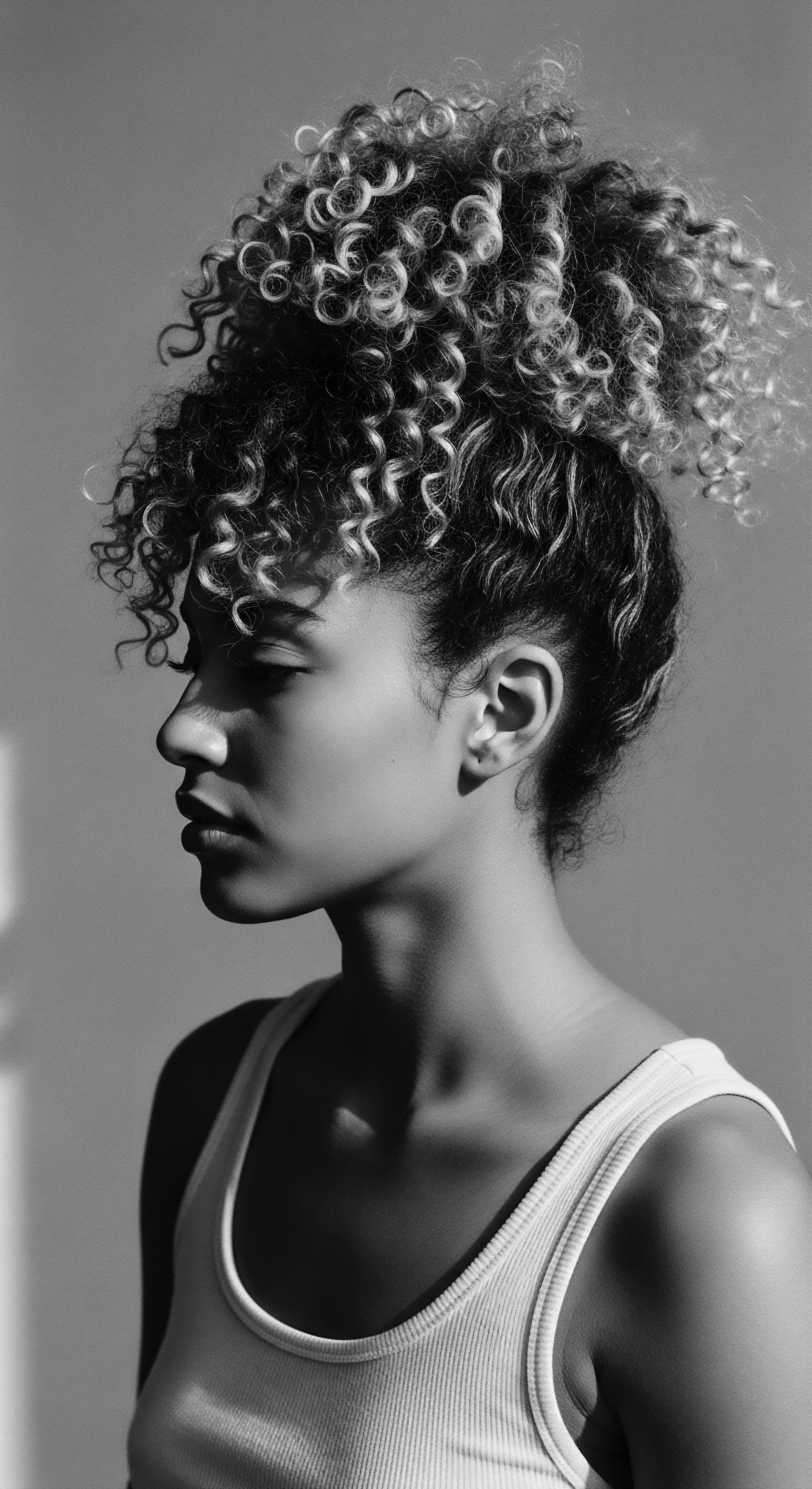
What Does Hair Braiding Reveal About Social Connection?
Braiding, dating back to at least 3500 BCE in Namibia, stands as a cornerstone of ancestral hair rituals. (Creative Support, 2023) Beyond its practical utility for managing and protecting textured hair, braiding sessions were profound communal experiences. Women gathered, often for hours or even days, to engage in this intricate art. During these times, stories were exchanged, wisdom imparted, and social connections fortified.
The rhythmic movements of fingers through strands facilitated an environment for intimate communication, a space where laughter and conversation flowed freely. This act fostered a sense of belonging and reinforced familial and community ties. (Khumbula, 2024; Odele Beauty, 2024) Braiding transcended age, serving as a rite of passage for young girls, who learned not only the physical skill but also the cultural significance and oral histories embedded within each pattern. (Elom African Braids, 2023)
Braiding sessions served as ancient gathering places, forging community bonds and sharing ancestral wisdom through shared touch.
Beyond communal bonding, specific braiding patterns carried a complex language. In West African societies around the 1400s, hairstyles could convey one’s social status, marital status, age, wealth, or ethnic affiliation. (Creative Support, 2023; Queen’s Journal, 2025; Team True Beauty, 2023) For instance, the Fulani people are recognized for their intricately braided cornrows, while the Himba Tribe traditionally wears thick braids adorned with clay. (Khumbula, 2024) During the transatlantic slave trade, braids took on a clandestine role, becoming a means of survival.
Enslaved people used cornrows to create secret messages and even maps to escape routes, sometimes concealing seeds within the braids for sustenance after escape. (Salford Students’ Union, 2024; Odele Beauty, 2024) This exemplifies the profound adaptability and resilience embedded within these ancestral practices, where beauty and resistance became inextricably linked.
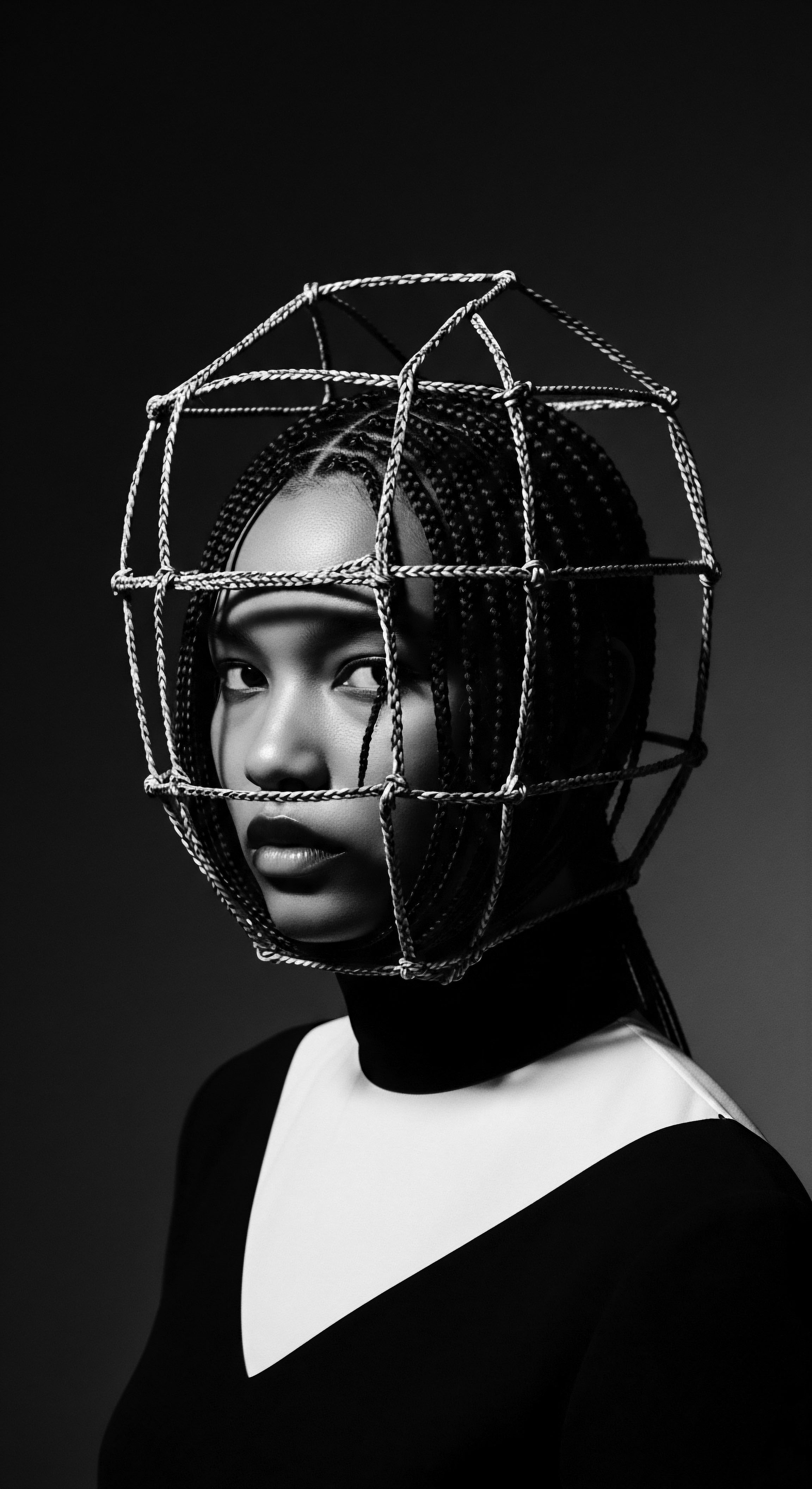
Protective Styles and Their Enduring Heritage
Ancestral societies understood the necessity of protective styling long before modern terminology existed. Styles like braids, twists, and locs safeguarded hair from environmental damage, retained moisture, and prevented breakage. These techniques were not solely about preservation; they were statements of identity and cultural continuity.
The historical use of protective styles directly informs modern approaches to textured hair care, advocating for methods that minimize manipulation and promote overall hair health. The enduring appeal of these styles underscores a deep-seated connection to heritage and an affirmation of natural beauty.
- Cornrows ❉ Tightly woven braids lying close to the scalp, often forming intricate patterns. Their historical use in Africa dates back thousands of years. (Odele Beauty, 2024)
- Bantu Knots ❉ Sections of hair twisted and then coiled tightly against the scalp, resulting in small, knot-like formations.
- Two-Strand Twists ❉ A simple yet effective method of twisting two hair strands around each other from root to tip, offering definition and protection.
- Locs ❉ A hairstyle where hair is intentionally matted and sculpted into rope-like strands. This style can be permanent and requires specific maintenance. (Historical Perspectives on Hair Care, 2025)

The Cultural Weight of Head Coverings
Head coverings, such as bonnets and headwraps, possess a rich and complex history within Black communities, reflecting a journey from ancient regality to tools of oppression, and ultimately, symbols of resilience and cultural expression. In African regions, headwraps, known as “dukus” or “doek,” communicated wealth, ethnicity, marital status, and even emotional states. (Byrdie, 2022) This practice carried over into the diaspora, where during enslavement, headwraps and bonnets were weaponized, used to visibly distinguish Black women as subordinate. (Byrdie, 2022; Team True Beauty, 2023) Laws were even enacted, such as Louisiana’s Tignon Law, which mandated Black women cover their hair.
(Cee Cee’s Closet NYC, 2021) Yet, these coverings were simultaneously reclaimed as acts of defiance. Black women utilized them to communicate coded messages and expressed autonomy by wearing colorful, ornate headscarves. (Byrdie, 2022; Queen’s Journal, 2025) Today, the bonnet continues to serve as a practical tool for hair protection and a powerful symbol of heritage and self-acceptance, a testament to the enduring spirit of ancestral traditions. (Helix Hair Labs, 2023)
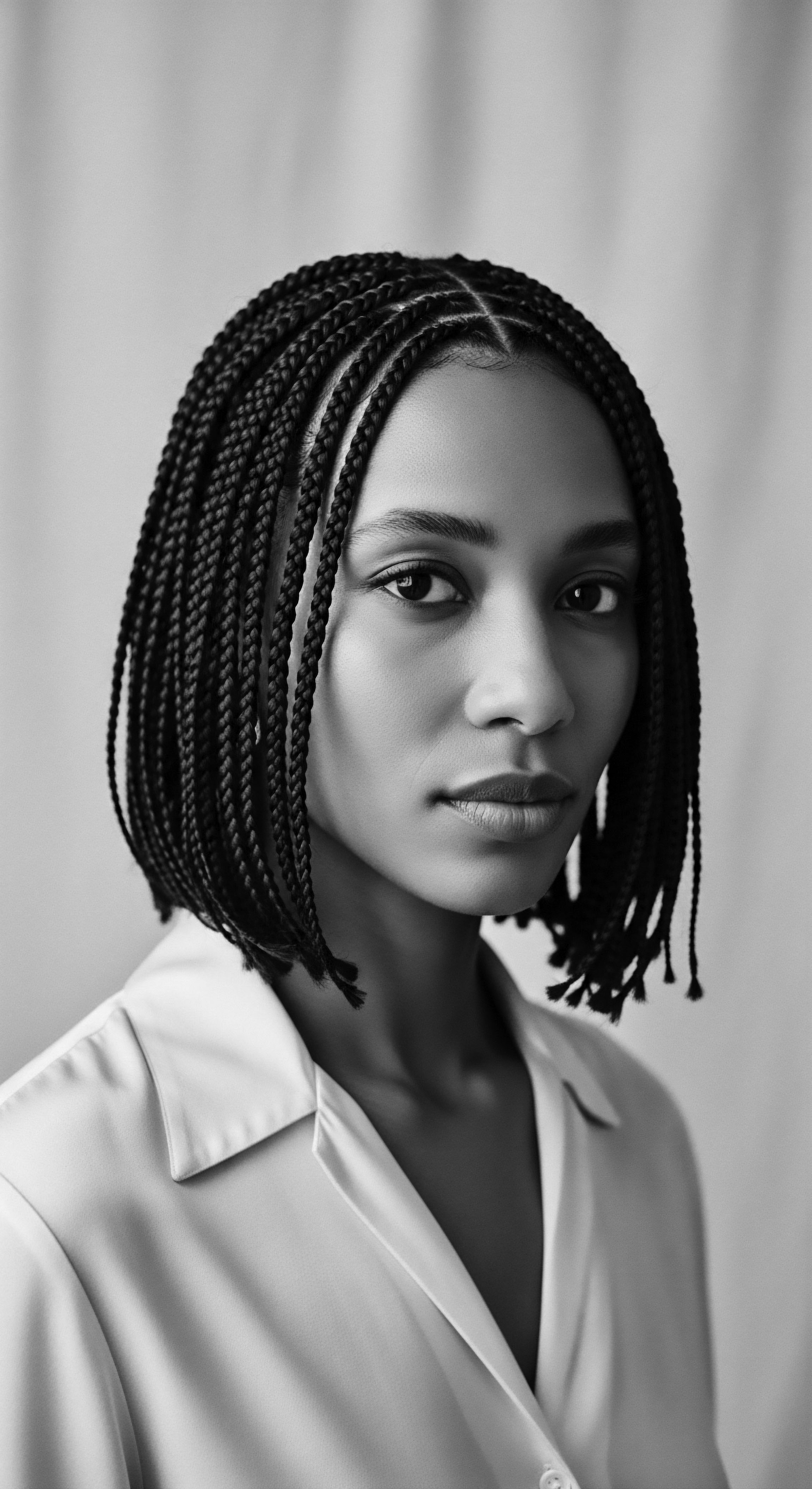
Relay
The journey of textured hair through history is a powerful relay, a continuous transfer of meaning, struggle, and triumph across generations. From pre-colonial African societies where hair signified identity, wealth, and spiritual connection, to the brutal ruptures of the transatlantic slave trade, and through subsequent movements for liberation, hair rituals have consistently shaped community bonds and individual self-perception. This continuum highlights how ancestral wisdom, often suppressed or distorted, resurfaces to inform contemporary understanding, offering both scientific insight and a deep cultural grounding for individuals of Black and mixed-race heritage.
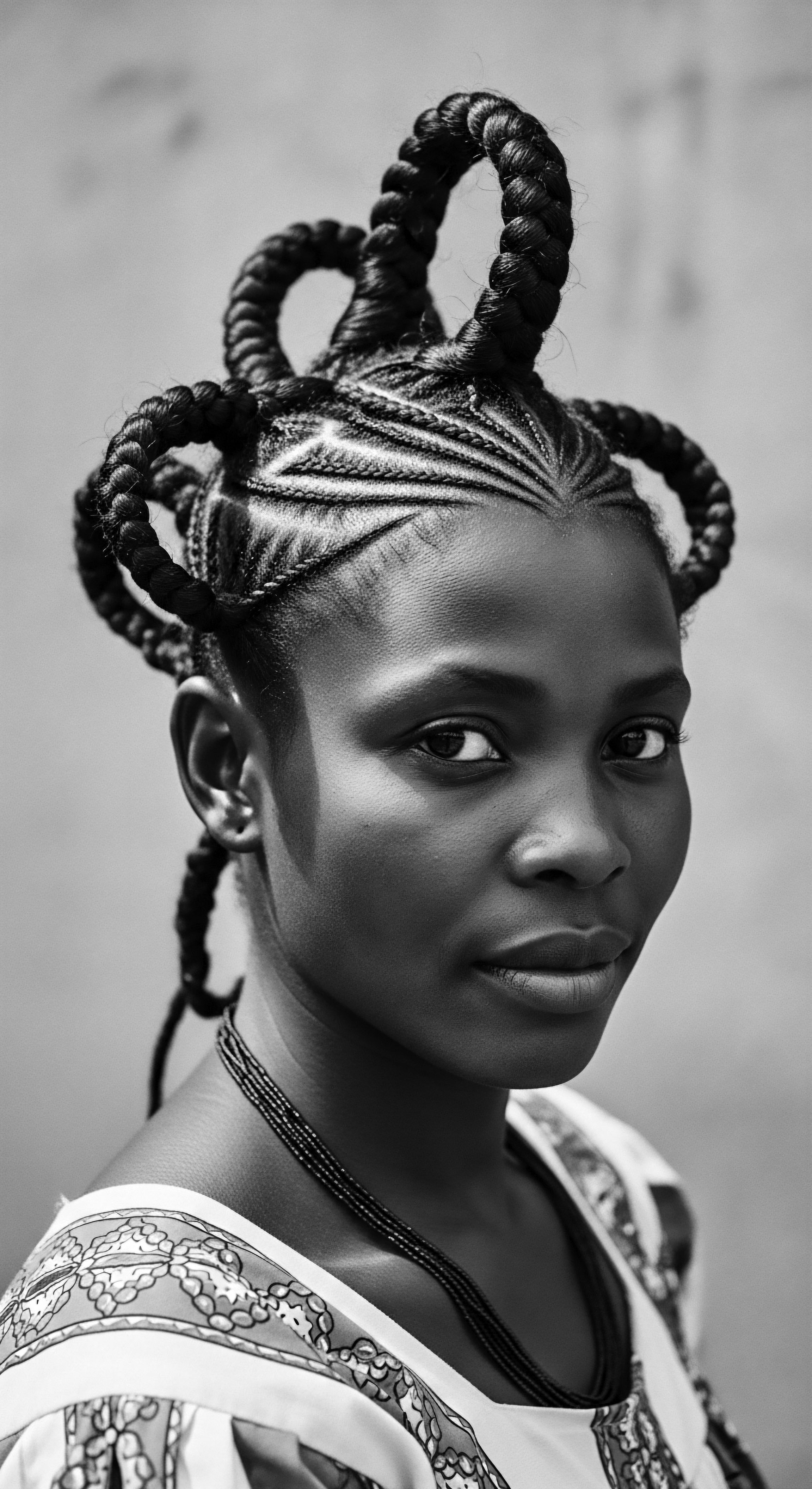
How Ancestral Rituals Navigated Eras of Oppression?
In ancient African civilizations, hair was intrinsically linked to a person’s existence, a true representation of their heritage and a marker of diverse social positions. Hairstyles could denote age, religion, marital status, ethnic identity, wealth, and rank within the community. (Byrd & Tharps, 2001; EliScholar, 2023; University of Michigan, 2024; The Queen’s Journal, 2025) The intricate hair styling process, which often involved washing, combing, oiling, braiding, or twisting, and decorating hair with cloth, beads, or shells, was a social occasion, a shared opportunity to bond with family and friends. (Odele Beauty, 2023) This communal aspect fostered robust community connections, transforming hair care into a collective celebration of identity.
Hair served as a visual language in ancient African societies, communicating social standing and spiritual ties.
The advent of the transatlantic slave trade brought a brutal assault on this rich heritage. Enslaved Africans were often stripped of their identities, cultures, and personal belongings, and one of the first acts of dehumanization was shaving their heads. (EliScholar, 2023; Creative Support, 2023; Library of Congress, 2021) This act aimed to erase cultural ties and sever the deep connection between individuals and their ancestral roots. Without access to traditional hair care essentials—combs, herbal treatments, and oils—enslaved people struggled to maintain their hair.
They innovated, using what was available, such as bacon grease, butter, or kerosene as conditioners, and even sheep fleece carding tools as combs. (Odele Beauty, 2021; Library of Congress, 2021) This period also saw the imposition of Eurocentric beauty standards, promoting straight hair as “good” and coily textures as “ugly” or “unacceptable,” leading to a deeply damaging mentality that persisted for generations. (Odele Beauty, 2021; Nouvelles pratiques sociales, 2021; Team True Beauty, 2023)
Despite these profound hardships, resistance persisted. Enslaved women used hair wraps not only for protection but also to conceal messages and communicate coded information. (Byrdie, 2022) The practice of hair alteration, while sometimes driven by the desire to conform for survival or social mobility, also became a complex act of defiance. The legacy of this period manifests even today in hair discrimination, where natural textured hair is sometimes perceived as less professional.
A 2020 study, for instance, found that Black women with natural hairstyles are more likely to be perceived as less professional and, consequently, less likely to obtain employment compared to Black women with straightened hair. Moreover, 80% of Black women reported feeling it necessary to alter their natural hair to secure employment and meet societal expectations in the workplace. This statistic powerfully illuminates the ongoing struggle and the enduring influence of historical biases on self-perception and community belonging, even in contemporary professional spaces.

The Resilience of Textured Hair and Identity Reclamation
The Civil Rights Movement of the 1960s marked a significant turning point, birthing the “Black is Beautiful” movement. This era spurred a resurgence in natural hairstyles, such as the Afro, which became a potent symbol of racial pride, self-love, and political change. (Nouvelles pratiques sociales, 2021; Creative Support, 2023; University of Michigan, 2024; The Well, 2022) Activists, including Angela Davis and members of the Black Panthers, wore their Afros as a sign of rebellion against white American beauty standards and a clear assertion of Black power. (Queen’s Journal, 2025; JSTOR Daily, 2019) This shift was not merely aesthetic; it was a profound act of cultural reclamation, validating natural hair textures and challenging centuries of imposed negativity.
The embrace of natural hair connected individuals to their African roots, fostering a collective identity and a strong sense of community solidarity. (Nouvelles pratiques sociales, 2021)
The enduring presence of hair bonnets also exemplifies this resilience. While weaponized during enslavement, Black women transformed them into symbols of creative and cultural expression, decorating them with beautiful fabrics and adornments. (Helix Hair Labs, 2023; Cee Cee’s Closet NYC, 2021) Today, bonnets continue to be a practical tool for hair protection and a symbol of cultural identity, used proudly in diverse settings. (Team True Beauty, 2023; Byrdie, 2022) This transformation from a tool of oppression to an emblem of cultural pride speaks to the tenacity of Black communities in preserving their heritage.

Traditional Ingredients and Modern Validation
Ancestral hair care rituals often relied on natural botanical ingredients, many of which are now gaining recognition in modern science for their efficacy. Traditional African practices utilized indigenous oils, butters, and herbs to maintain moisture, strength, and overall hair health. For example, shea butter, sourced from West Africa, has been used for centuries for its moisturizing and healing properties, a practice still widespread today. (Well+Good, 2022; Botanical Voyage, 2024) Similarly, marula oil, rich in antioxidants and fatty acids, has cultural significance and has been used for its healing attributes for centuries.
(Well+Good, 2022) Chebe powder, originating from Chad, has been valued for generations for its ability to promote length retention. (Chrisam Naturals, 2023; Reddit, 2021)
These examples illustrate a powerful connection between ancient wisdom and contemporary understanding. The science of hair wellness often validates practices rooted in ancestral knowledge, providing a bridge between tradition and innovation. This convergence underscores the authority of heritage, demonstrating that these practices were not simply superstitious, but profoundly effective solutions for textured hair, informed by deep ecological and biological observation. This knowledge, passed down through generations, continues to guide the formulation of modern hair care products, honoring the legacy of those who first understood the intrinsic needs of textured strands.
- Shea Butter ❉ A rich fat extracted from the nuts of the shea tree, known for its deep moisturizing and sealing properties. (Well+Good, 2022)
- Baobab Oil ❉ Derived from the “tree of life,” this oil is abundant in vitamins A, D, and E, offering moisturizing and regenerative qualities. (Well+Good, 2022)
- Moringa Oil ❉ Sourced from the moringa tree, this oil is packed with fatty acids, providing nourishment and protection for hair and scalp. (Well+Good, 2022)
- African Black Soap ❉ A traditional cleanser made from plantain skins, cocoa pods, and palm oil, revered for its gentle yet effective cleansing. (Chrisam Naturals, 2023)

Reflection
The journey through the heritage of textured hair reveals a profound truth ❉ ancestral hair rituals are not relics of a distant past, but living, breathing expressions of identity and community, continuously echoing through contemporary life. Each coil, kink, and braid holds the memory of hands that cared, voices that shared stories, and spirits that resisted. This legacy, steeped in resilience and creative power, teaches us that the act of tending to textured hair reaches far beyond personal grooming; it becomes a dialogue with history, a reaffirmation of belonging, and a declaration of self-acceptance.
The ‘Soul of a Strand’ ethos reminds us that true well-being stems from recognizing the deep roots of our being, connecting our personal self-perception to the collective narrative of those who came before. In this continuous relay of wisdom, we honor a heritage that reminds us of the enduring beauty in authenticity and the unbreakable bonds forged in shared cultural practice.

References
- Byrd, Ayana, & Tharps, Lori. (2001). Hair Story ❉ Untangling the Roots of Black Hair in America. St. Martin’s Press.
- Cee Cee’s Closet NYC. (2021, March 10). The History of the Hair Bonnet. Cee Cee’s Closet NYC.
- Creative Support. (2023). The History of Black Hair. Creative Support.
- Elom African Braids. (2023, December 21). The History and Cultural Significance of African Hair Braiding. Elom African Braids.
- Helix Hair Labs. (2023, March 3). The History of the Hair Bonnet. Helix Hair Labs.
- Historical Perspectives on Hair Care and Common Styling Practices in Black Women. (2025, March 4).
- Jablonski, Nina G. & Chaplin, George. (2014). The evolution of skin pigmentation and hair texture in people of African ancestry. Dermatologic Clinics, 32(1), 113-121.
- JSTOR Daily. (2019, July 3). How Natural Black Hair at Work Became a Civil Rights Issue. JSTOR Daily.
- Khumbula. (2024, April 16). A Crowning Glory ❉ Hair as History, Identity, and Ritual. Khumbula.
- Library of Congress. (2021). Heavy is the Head ❉ Evolution of African Hair in America from the 17th c. to the 20th c. Library of Congress.
- Nouvelles pratiques sociales. (2021, April 19). The importance of hair in the identity of Black people. Érudit.
- Odele Beauty. (2021, February 22). 6 Things Everyone Should Know About Black Hair History. Odele Beauty.
- Odele Beauty. (2024, January 16). A History Lesson On Hair Braiding. Odele Beauty.
- Salford Students’ Union. (2024, October 29). The Remarkable History Behind Black Hairstyles. Salford Students’ Union.
- Team True Beauty. (2023, December 7). The Significance and History of Black People Bonnets. Team True Beauty.
- The Queen’s Journal. (2025, February 7). History, identity, and community ❉ The significance of Black hair. The Queen’s Journal.
- The Well. (2022, February 10). What Everyone Needs to Know About Black Hair History. THE WELL.
- Thompson, Cheryl. (2009). Black Women and Identity ❉ What’s Hair Got to Do With It? University of Michigan.
- Well+Good. (2022, August 17). African Beauty Is Rooted in Traditional Ingredients and Rituals, and It’s Helped Me Feel More Connected to My Kenyan Culture. Well+Good.
